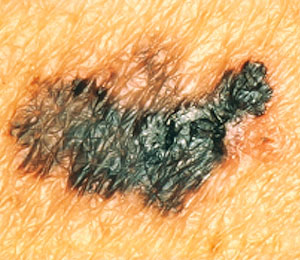 GPs with an interest in skin cancer are more likely to use sequential dermoscopic digital imaging (SDDI) and have onsite access to total body photography (TBP) than dermatologists, according to an Australian study.
GPs with an interest in skin cancer are more likely to use sequential dermoscopic digital imaging (SDDI) and have onsite access to total body photography (TBP) than dermatologists, according to an Australian study.
An online survey of 175 GPs and 52 dermatologists regarding the diagnostic tools they use to diagnose early melanoma found 93.6% of skin cancer GPs, 80.8% of dermatologists and 45.3% of generalist GPs used SDDI at least occasionally.
A digital camera with dermoscope attachment was used most often by dermatologists (56.5%) while a phone with dermoscope attachment was used most amongst generalist GPs (56.8%).
“For skin cancer GPs, there was an even spread of equipment used for SDDI between camera/phone with dermoscope attachment and digital dermoscopy imaging systems,” the study authors said.
The study, published in the Australasian Journal of Dermatology, also found TBP was well used or recommended for melanoma surveillance by most generalist GPs (77.1%), skin cancer GPs (82.3%) and dermatologists (86.5%).
However it was more available in the practices of skin cancer GPs (38.0%) than dermatologists (15.0%) and generalists GPs (1.5%).
Cost was the biggest barrier to better access.
“When in-clinic access was not available, TBP images were obtained by 51.7% of dermatologists and 27.5% of GPs through referral to private organisations such as Molemap,” the study said.
Automated diagnostic instruments such as Molemax, Visionmed and Solarscan, which are not recommended by melanoma guidelines, were used occasionally by skin cancer GPs (7.7%) and dermatologists (2.0%) but not by generalist GPs.
Just over half of skin cancer GPs (51.7%) felt that access to automated instruments with high sensitivity and specificity would be useful in their management of difficult skin lesions.
Skin cancer GPs were less likely than generalist GPs to refer difficult skin lesions to private dermatologists (5.4% v 21.5%) or public hospitals (4.4% v 10.5%).
The study found almost all generalist GPs and skin cancer GPs used and were confident with dermoscopy however 20.9% said further training in dermoscopy would be useful.
“As proficiency in dermoscopy is a requirement in the dermatology training curriculum in Australia, we did not assess dermoscopy in dermatologists,” the study authors explained.
They said the higher use of tools such as SDDI by skin cancer GPs than dermatologists possibly reflected a greater range of subspecialty practice interests amongst dermatologists.
The disproportionately high proportion of skin cancer GPs responding to the survey was probably a strength of the study as it helped provide a better understanding of their role in melanoma management, they added.